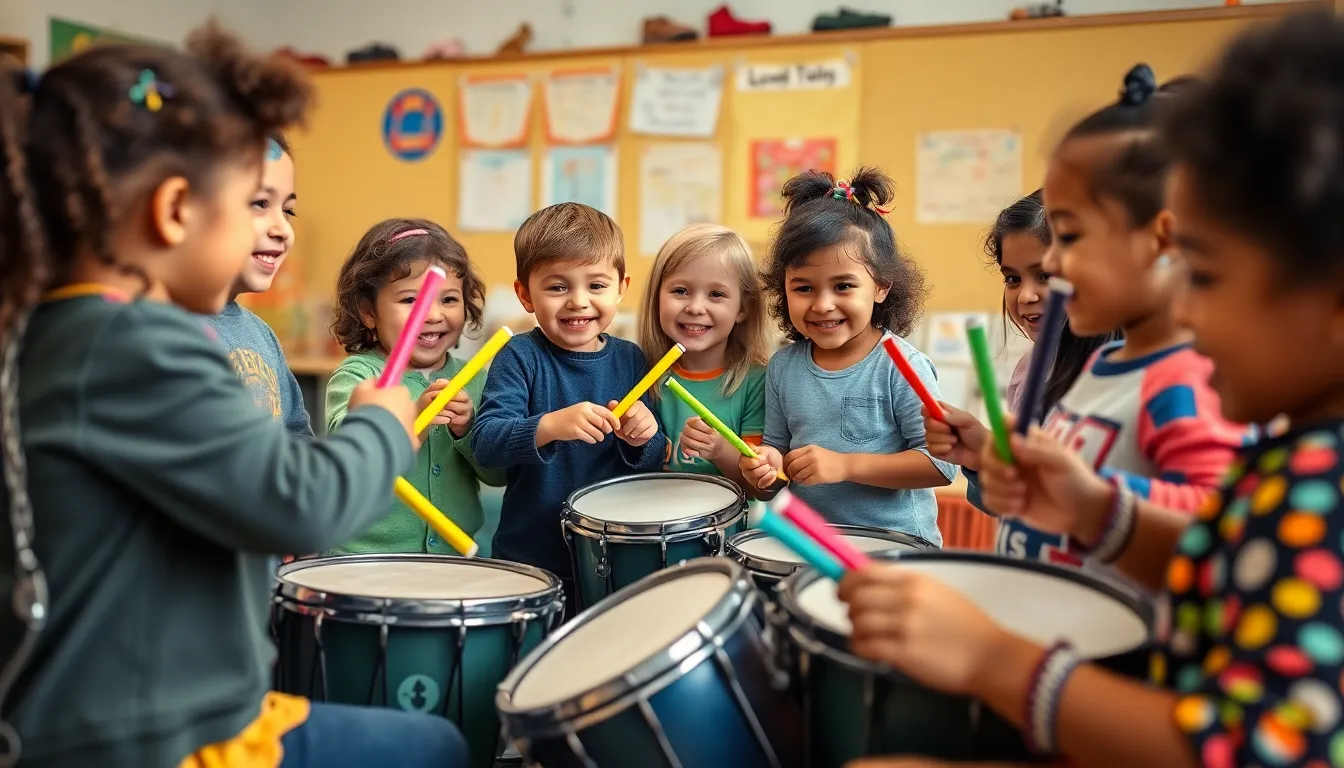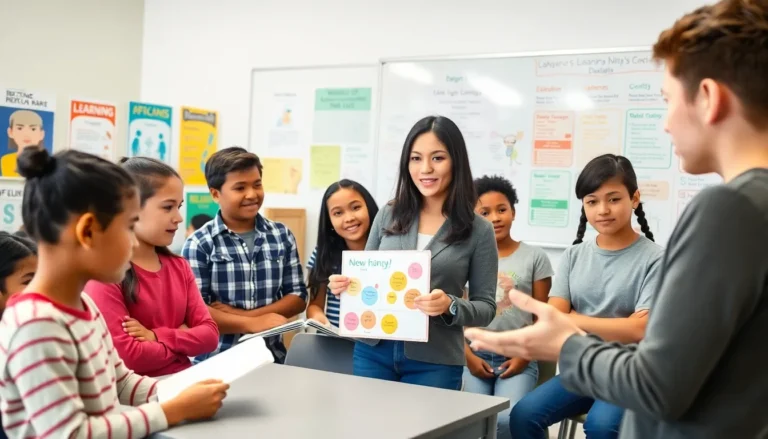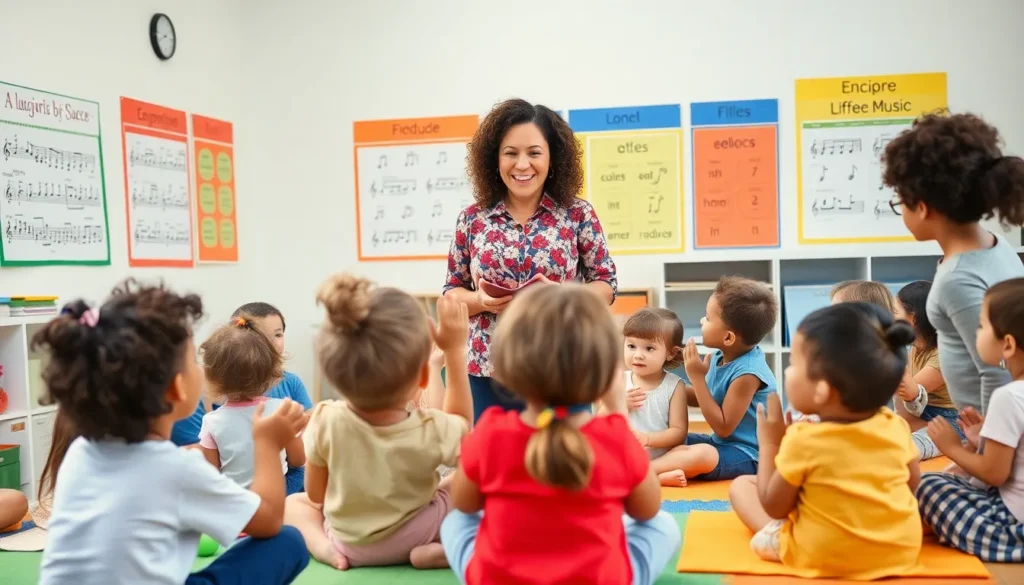Table of Contents
ToggleIn today’s multicultural world, the fusion of language and music offers a unique pathway for learning. Language music classes harness the power of melody and rhythm to enhance vocabulary, pronunciation, and comprehension. By integrating musical elements into language learning, students engage their auditory senses, making the process more enjoyable and effective.
These classes cater to diverse age groups and skill levels, providing an innovative approach to mastering a new language. Whether it’s through singing, songwriting, or rhythmic exercises, participants find themselves immersed in a dynamic environment that promotes both linguistic and musical growth. Discover how language music classes can transform the way individuals connect with new languages while nurturing their passion for music.
Overview of Language Music Classes
Language music classes blend linguistic skills with musical education, enriching the learning process. These classes engage students through various activities that enhance their understanding of a target language while making learning enjoyable.
Key Components
- Singing: Students sing songs in the target language, reinforcing vocabulary and improving pronunciation.
- Songwriting: Participants create their own lyrics, which encourages creativity and practical application of grammar.
- Rhythmic Exercises: Classes incorporate rhythm-based activities that aid in retaining language structures and patterns.
Benefits
- Enhanced Vocabulary: Music introduces new words in context, helping learners remember and use them.
- Improved Pronunciation: Melody supports correct pronunciation and intonation, essential for effective communication.
- Cultural Connection: Music fosters appreciation for the culture associated with the language, deepening understanding.
Target Audience
Language music classes cater to diverse age groups, from preschoolers to adults. They accommodate various skill levels, ensuring that each participant finds a suitable fit for their learning journey.
Language music classes represent an innovative approach that combines fun and education, yielding significant improvements in language acquisition.
Benefits of Language Music Classes

Language music classes offer numerous advantages that enhance the learning process. These benefits encompass cognitive development, language acquisition, and cultural appreciation.
Cognitive Development
Cognitive development progresses significantly through language music classes. Engaging with both music and language stimulates various cognitive functions like memory, attention, and problem-solving. For instance, singing along to songs aids in auditory processing, allowing learners to internalize sounds and patterns. Additionally, rhythmic activities enhance timing and coordination, promoting overall brain development. Studies show that music education correlates with improved academic performance, including higher scores in reading and mathematics.
Language Acquisition
Language acquisition flourishes in language music classes due to the natural integration of melody and rhythm. Participants experience accelerated vocabulary growth as they learn new words within meaningful contexts. Melodic structures make it easier to remember pronunciation and syntax, resulting in improved linguistic accuracy. Moreover, the repetitive nature of songs reinforces language retention, allowing learners to practice at their own pace. Engaging with music from diverse cultures also fosters an appreciation for different languages and dialects, enriching the overall learning experience.
Types of Language Music Classes
Language music classes come in various formats to suit different learning preferences and environments. Two primary types include immersive programs and structured curriculum classes.
Immersive Programs
Immersive programs focus on fully engaging participants in a target language through music. These classes often involve activities like singing, dancing, and playing instruments, all in the target language. The environment mimics real-life situations, encouraging natural language use. For example, a Spanish immersion class might involve participants singing traditional Spanish songs while learning cultural context. Such an approach fosters a deeper connection between language and culture, enhancing retention and comprehension.
Structured Curriculum
Structured curriculum classes follow a defined lesson plan to systematically develop language skills alongside musical understanding. These classes incorporate established language frameworks, integrating music as a tool for vocabulary acquisition, grammar reinforcement, and pronunciation practice. For instance, a French language music class might include specific song exercises aligned with learning objectives, such as verb conjugation or adjective agreement. This method provides measurable progress and clear outcomes, catering to learners’ various goals and proficiency levels.
Tips for Choosing the Right Class
Selecting an appropriate language music class requires considering several factors to ensure the best fit for individual needs. Here are key tips to aid in the decision-making process.
Age Appropriateness
Class selection hinges on age suitability, as different age groups benefit from tailored approaches. For preschoolers, classes with engaging songs and interactive activities stimulate curiosity and language interest. Elementary-aged children thrive in classes that combine fun with structured learning, integrating music to enhance vocabulary. For teens and adults, classes should focus on practical language use, blending music styles that resonate with their interests while promoting conversational skills. Investigating age-specific program recommendations can significantly impact learning outcomes.
Instructor Qualifications
Instructor qualifications are crucial in ensuring effective learning experiences. Look for instructors with degrees in education or music, coupled with experience in language teaching. Certified language instructors often better understand second language acquisition theories and methods. Additionally, instructors with musical training enhance the integration of music in language learning, creating a balanced curriculum. Observing a class or reviewing instructor credentials can provide insights into their teaching efficacy and alignment with learning goals.
Language music classes offer a dynamic way to enhance language learning through engaging musical activities. By combining melody and rhythm with vocabulary and pronunciation practice, these classes create an immersive environment that caters to learners of all ages. The cognitive benefits are significant, as students develop memory and problem-solving skills while enjoying the process.
Choosing the right class is essential for maximizing the learning experience. With options ranging from immersive programs to structured curriculum classes, individuals can find a suitable fit that aligns with their goals. As language music classes continue to grow in popularity, they represent an innovative approach to language acquisition that makes learning both effective and enjoyable.







